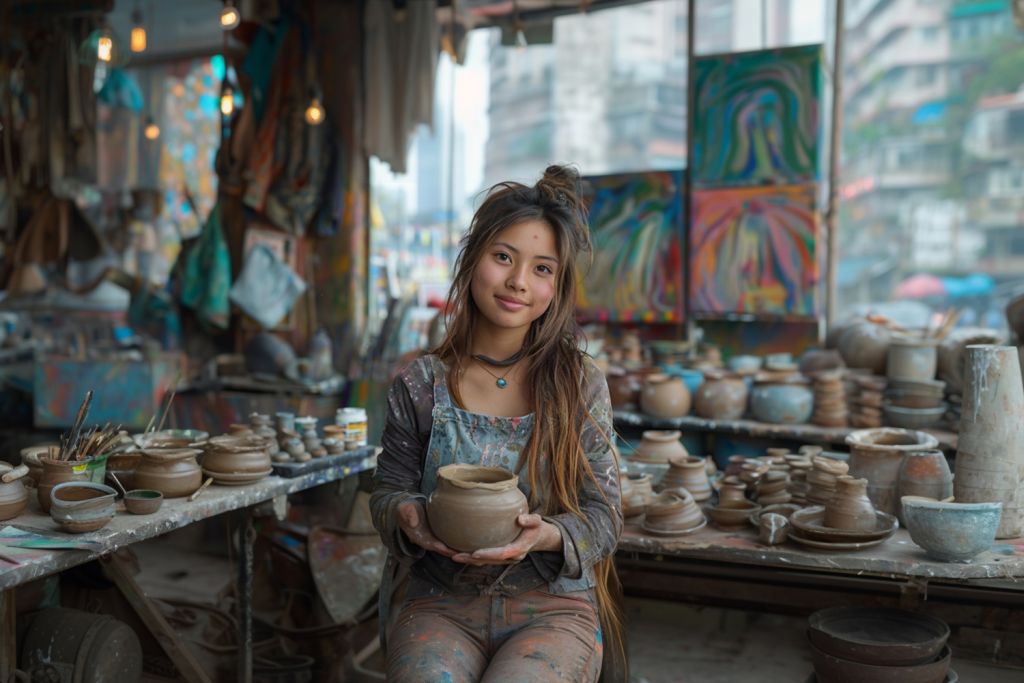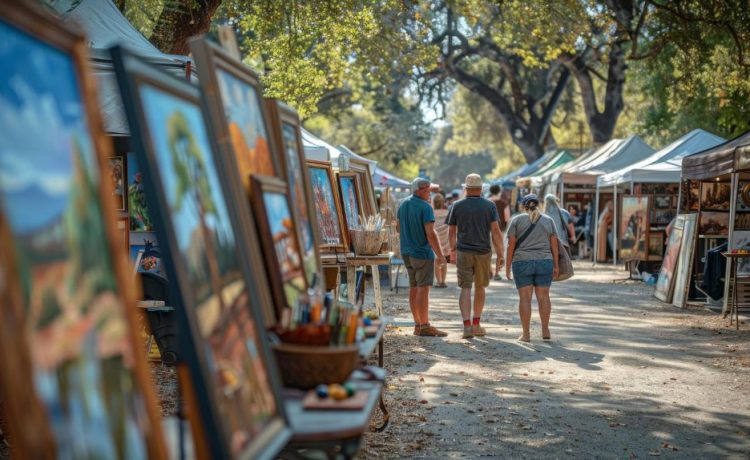Local artists are not just creators of beauty and thought-provoking pieces; they are the heartbeat of our communities. Their work weaves the fabric of local identity, bringing vibrancy, unity, and a unique sense of belonging to neighborhoods. This blog post will explore how local artists shape and redefine community identity, the impact of their work, the challenges they face, and why supporting them is crucial.
Building Community Through Art
Local artists have historically played a significant role in shaping community identity. Art is not just about aesthetics; it is a powerful tool for storytelling, preserving heritage, and fostering connections. Take, for instance, the murals in Philadelphia that tell the stories of the city’s diverse culture, or the street art in London’s East End, which captures the area’s vibrant and rebellious spirit. These examples highlight how art can transform public spaces and create a shared sense of pride among residents.
Art fosters a sense of belonging by providing a platform for individuals to express their experiences and connect with others. Community art projects, like public murals or collaborative installations, invite participation and engagement, strengthening the bonds between residents. When people see their culture, struggles, and triumphs reflected in local art, they feel a deeper connection to their community.
Furthermore, art plays a crucial role in revitalizing neighborhoods. A once-neglected area can be transformed into a thriving cultural hub through the efforts of local artists. This not only attracts visitors but also instills a sense of pride among residents. It’s no wonder that cities around the world are investing in public art as a means to boost tourism, improve quality of life, and foster community spirit.

The Impact of Local Artists
The influence of local artists extends beyond the aesthetic; it permeates the very essence of community life. Residents often perceive local artists as the soul of their neighborhoods. They bring a sense of character and uniqueness that sets one community apart from another. This is evident in the way people talk about their local art scene, sharing stories of favorite murals, street performances, and gallery exhibitions.
Case studies from various communities highlight the significant impact of local artists. In New Orleans, for example, the “Prospect” triennial has become a major cultural event, showcasing the work of local and international artists and drawing visitors from around the world. This event has not only boosted the city’s economy but also reinforced its reputation as a vibrant cultural hub.
Similarly, in the small town of Marfa, Texas, local artists have transformed the community into an art destination. The presence of art installations and galleries has attracted tourists and art enthusiasts, leading to economic growth and increased visibility for local talent. These examples demonstrate how local artists can drive cultural and economic development, enhancing the overall identity of their communities.
Challenges Faced by Local Artists
Despite their significant contributions, local artists often face numerous challenges in gaining recognition and support. One of the primary obstacles is funding. Many artists struggle to secure financial resources to sustain their work, leading to a precarious existence. Limited access to grants, sponsorships, and affordable studio space can hinder their ability to create and share their art with the community.
Another challenge is visibility. Local artists may find it difficult to reach a wider audience, especially in communities where the arts are not a priority. Without adequate platforms to showcase their work, their talent may go unnoticed. This lack of exposure can be discouraging and may force artists to seek opportunities elsewhere, depriving their community of their valuable contributions.
To overcome these challenges, various strategies and initiatives can be implemented. Community leaders and organizations can play a crucial role in supporting local artists by providing funding, creating opportunities for public art projects, and promoting their work through events and exhibitions. Collaborations between local businesses and artists can also help increase visibility and create a sustainable ecosystem for the arts.
Conclusion
Local artists are the unsung heroes of our communities, breathing life into our neighborhoods and shaping our collective identity. Their work fosters a sense of belonging, pride, and unity, transforming public spaces and revitalizing entire communities. However, they often face significant challenges that require our support and engagement.
By recognizing the importance of local artists and supporting their efforts, we can ensure that our communities continue to thrive culturally and economically. Attend local art events, purchase art from local artists, and advocate for policies that support the arts. Together, we can create a vibrant and inclusive community where art flourishes and enriches our lives.
Let’s celebrate and support the artists who make our communities unique and vibrant. Visit local galleries, participate in community art projects, and share the stories of the artists who inspire you. By doing so, you contribute to the rich tapestry of your community’s identity and help ensure a bright future for the arts.














